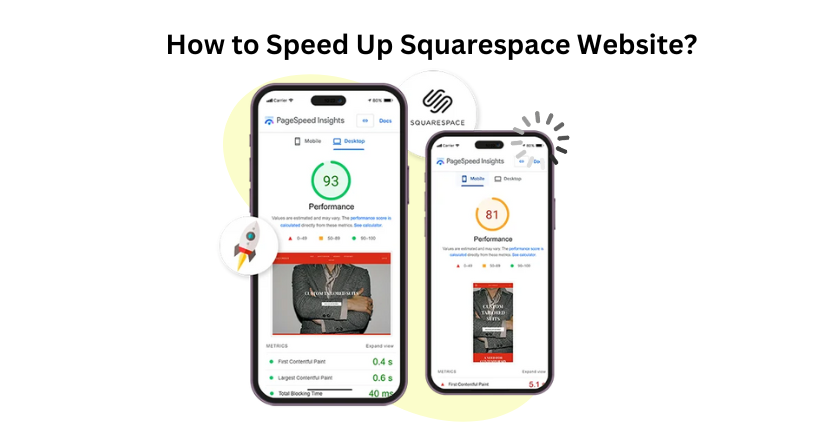TL;DR: A research by Google reveals that 53% of mobile users leave sites that take more than 3 seconds to load. This increases the bounce rate of a site and harms user experience. You can focus and boost your Core Web Vitals and optimize your site for mobile devices as more traffic is coming from the mobile devices nowadays.
Key Points
- A research by Google revealed that 53% Of Mobile Users Abandon Sites That Take Over 3 Seconds To Load.
- The average mobile website loading speed is 19 seconds on a 3G connection and 14 seconds on a 4G connection.
- An article, “The Need for Mobile Speed,” says that a site owner whose site loads in less than 5 seconds earns up to 2X mobile ad revenue.
- The site loading in 5 seconds boasts 25% higher ad viewability, 35% lower bounce rate, and 70% longer average sessions.
- One out of two people expects a page to load in less than 2 seconds.
In this digital era of smartphones, what is needed most is speed. Google research suggests that one out of two people expect a page to load in 2 seconds. Moreover, 46% of people say that waiting for the page to load is the most frustrating thing when browsing a website with their mobile devices.
Now, the question that arises here is, Why 53% of mobile users abandon sites that take over 3 seconds to load? Let’s take a deep dive into this topic and analyze every aspect related to mobile page load time.
Here Are Some Possible Reasons For The Mobile User Bounce Rate

1. Increased importance of a mobile-friendly website
As people are spending most of their time on their mobile phones, it is obvious that website speed optimization on mobile devices becomes crucial. Over 50% of mobile users leave sites that take longer than 3 seconds to load, but the worst part is that most web pages take a much longer time than this, creating a wide gap between users’ expectations and most web capabilities.
2. Ads are becoming a hurdle in mobile page load time
Ads are also extending this problem to an extent, as mobile ads take an average of 5 seconds to load on mobile. It is double the time it takes on a desktop, research suggests. And the problem seems bigger when we come to know that from all the time spent on digital media, mobile devices take up 57% of it.
3. The shift to mobile is only increasing
Now, businesses and developers are focusing on website speed optimization as mobile is becoming critical. As the digital domain is expanding and competition is increasing, this shift is soaring high. So, those who are prepared will win, and those who are not will soon be out of the race.
Then What’s The Solution?
Firstly, the solution is to focus on mobile website loading speed by optimizing it for mobile devices, as mobile page load time is creating a concerning problem for most businesses.
Introduced in 2020, Google’s Core Web Vitals are essential metrics, showing various aspects of website and page performance. It helps you analyze your website’s page performance, including visual stability, user engagement, loading speed, etc. It is a mindful part of website speed optimization that will help you fix slow loading times.
Secondly, you can improve your website’s mobile loading speed by adopting responsive web designs that align with every device, ensuring touchscreen adaptability, optimizing forms for mobile, simplifying navigation, using mobile-friendly media, and implementing mobile-friendly pop-ups, etc.
Also, Google is attacking the problem of mobile website loading speed
and has created its AMP initiative to fix slow loading time and reduce mobile user bounce rate. This project aims to cut the mobile page loading times to less than a second. Platforms like AdSense are working for the initiative, aiming to create mobile-optimized ads for publishers. And the best part is that this project was initially focused on publishers but now has expanded to cover the e-commerce and ad landing pages as well in this initiative.
Conclusion
As we are in the evolving digital phase, where a website developer or businesses can’t ignore a single aspect, mobile website loading speed is a crucial aspect to focus on. We have summarized the answer to “Why 53% of mobile users abandon sites that take over 3 seconds to load” to deeply understand the various aspects related to that.
Also, we have mentioned some possible solutions for website speed optimization for mobile devices based on research and techniques.
Frequently Asked Questions (FAQs)
Q1. Why do mobile users abandon sites that take more than 3 seconds to load?
Research by Google shows that 53% of users leave a site if it takes more than 3 seconds to load. Slow web loading times frustrate users and lack to fulfill the expectations of the user to access the content or information faster.
Q2. What is the average mobile website loading time?
On average, mobile websites take about 19 seconds to load over a 3G connection and 14 seconds over a 4G connection. This is very far and slow from the user’s ideal expectation of 2-3 seconds of load time.
Q3. How does mobile page speed impact ad revenue and user engagement?
According to Google’s report "The Need for Mobile Speed", websites that load in under 5 seconds earn up to 2x more mobile ad revenue, enjoy 25% higher ad viewability, 35% lower bounce rates, and 70% longer average sessions.
Q4. How do ads affect mobile website speed?
Mobile ads take much longer to load, around 5 seconds to load, compared to desktop. These negatively affect the overall mobile page speed, contributing to higher bounce rates and poor UX.
Q5. What are some effective solutions to reduce mobile loading time?
Key solutions include:
- Optimizing images and code
- Adopting responsive web design
- Using mobile-friendly forms and layouts
- Implementing lazy loading
- Reducing third-party scripts
- Leveraging Google’s Core Web Vitals for performance improvement
Q6. What is Google's AMP project, and how does it help?
Google’s AMP (Accelerated Mobile Pages) project aims to reduce mobile page loading times to under a second. It creates fast, lightweight pages and mobile-optimized ads. Initially built for publishers, AMP now also supports e-commerce and ad landing pages.















































